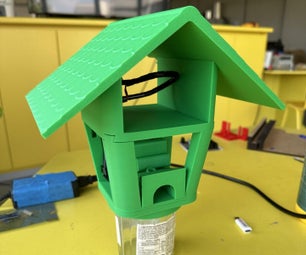Introduction: Penny Battery
Hello and welcome to my first instructable!!! I want to start posting all my projects on here so I figured I would post one of my favorites, the penny battery!!!
This is a great project to know for those into survival. What I have done to expand this project is hook my homemade penny battery to a joule thief(coming soon) and I can run my higher brightness LEDs off the power it generates.
I know this has been done before, I just wanted to post my version.
Now let's get on to the project!!
This is a great project to know for those into survival. What I have done to expand this project is hook my homemade penny battery to a joule thief(coming soon) and I can run my higher brightness LEDs off the power it generates.
I know this has been done before, I just wanted to post my version.
Now let's get on to the project!!
Step 1: Gather the Parts
Tools used :
-Hot glue gun
-Scissors
-100 grit sandpaper (I used my dremel set that had a sandpaper tip. )
Alternative option is to use aluminum foil instead of sanding down the pennies, I did that in some of the pictures, but I prefer the sanded option, cutting tin foil into little circles sucks.
Materials needed :
-Pennies newer than 1983( the newer years penny's consist of around 98% zinc. )
-Cardboard ( I cut mine off a box, but I have used tissue paper, and wet wipes with success also. )
-Some form of electrolyte, I used salt and water, but I still haven't found the perfect mixture yet. (Still in testing stage)
-Hot glue gun
-Scissors
-100 grit sandpaper (I used my dremel set that had a sandpaper tip. )
Alternative option is to use aluminum foil instead of sanding down the pennies, I did that in some of the pictures, but I prefer the sanded option, cutting tin foil into little circles sucks.
Materials needed :
-Pennies newer than 1983( the newer years penny's consist of around 98% zinc. )
-Cardboard ( I cut mine off a box, but I have used tissue paper, and wet wipes with success also. )
-Some form of electrolyte, I used salt and water, but I still haven't found the perfect mixture yet. (Still in testing stage)
Step 2: Prepare the Case
I used an old Chapstick container I found in my room that I had cleaned. I drilled a hole straight down the middle, then I took some wire and coiled it inside the container and hot glued the holes closed.
I have found that this container fits 6 penny's at a time which is enough to get at least 3 volts. I'm still toying around with it though to squeeze out all the volts I can.
I have found that this container fits 6 penny's at a time which is enough to get at least 3 volts. I'm still toying around with it though to squeeze out all the volts I can.
Step 3: Setup the Penny's
This is the stage where you grind one face off the penny to expose the silver looking zinc inside. The copper side is your negative and the zinc top is your positive. So you stack the penny's in order of:
(I like to put aluminum foil on the bottom to make testing the voltage easier, but that depends on preference.)
copper bottom -> zinc top -> cardboard -> repeat
That order equals out to one "cell", so you can stack up as many cells as needed. I have found I can get up to .7 volts each cell.
With how easily obtainable penny's are, I'm going to see how much voltage I can pull out of something like 50 penny's. =D
(I like to put aluminum foil on the bottom to make testing the voltage easier, but that depends on preference.)
copper bottom -> zinc top -> cardboard -> repeat
That order equals out to one "cell", so you can stack up as many cells as needed. I have found I can get up to .7 volts each cell.
With how easily obtainable penny's are, I'm going to see how much voltage I can pull out of something like 50 penny's. =D
Step 4: Test Voltage.
This is the stage where I use alligator clips to hook my multimeter up to my homemade penny battery. I have been writing down all my readings and times, hopefully I can figure out the best mixture to pull the highest amounts of voltage I can from this project. I have found that these batteries can last weeks powering LEDs and low voltage circuits. I will update with all additional information I collect.
Thanks for checking out this project!! I will be working on posting more soon!!
Thanks for checking out this project!! I will be working on posting more soon!!

Participated in the
Formlabs Contest

Participated in the
Tech Contest











